Because inflation seems the most likely candidate as a driver of gold price, the first two charts show the behaviors of CPI and spot gold price on a log scale (upper chart) and the ratio of spot gold price to CPI (lower chart) over the selected sample period. Results indicate that:
- Gold is far more volatile than CPI, but appears stays in touch with it.
- The ratio of gold price to CPI therefore varies considerably, but may revert to some mean. The ratio is approaching its peak value of about eight in 1980.
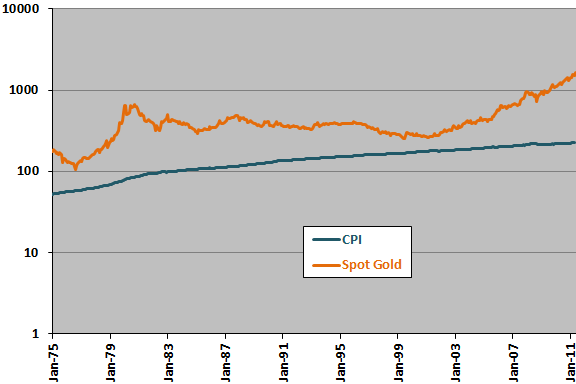

The following three scatter plots relate monthly spot gold return to same-month change in CPI, S&P 500 Index return and change in consumer sentiment over the selected sample period, respectively. Findings for these coincident relationships are:
- Spot gold return relates positively to change in CPI, but the latter explains only 1% of the monthly variation (the R-squared statistic is 0.01) in the former.
- Spot gold return has no relationship to stock market returns (the R-squared statistic is zero), supporting conventional wisdom that gold is a good diversifier for an equity portfolio.
- Spot gold return relates positively to change in consumer sentiment, but the latter explains only 1% of the monthly variation (the R-squared statistic is 0.01) in the former.
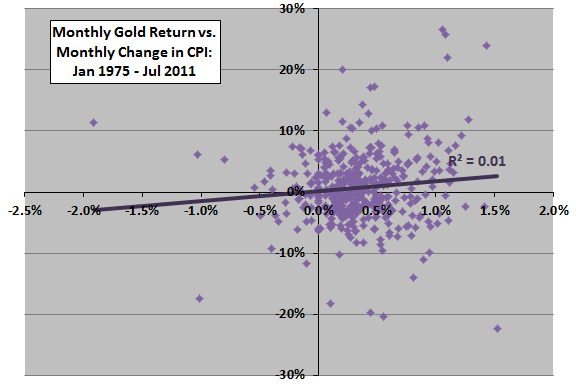
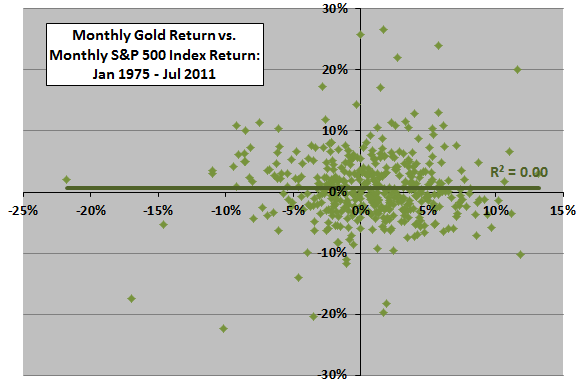
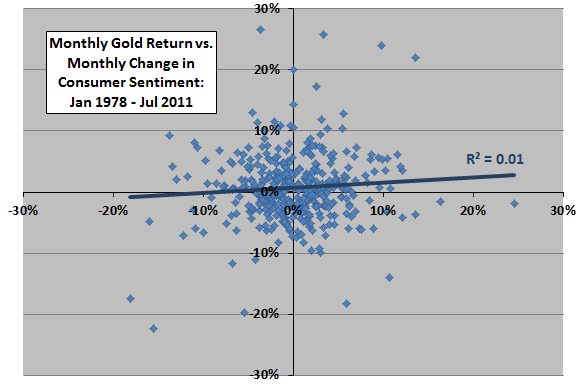
The next chart shows correlations for various lead-lag relationships between monthly spot gold return and monthly change in CPI over the selected sample period, ranging from spot gold return leads change in CPI by 12 months (-12) to change in CPI leads spot gold return by 12 months (12). The string of positive correlations from -12 to -1 indicates that spot gold return leads change in CPI over an interval of many months.
We therefore zoom out to an annual scale.
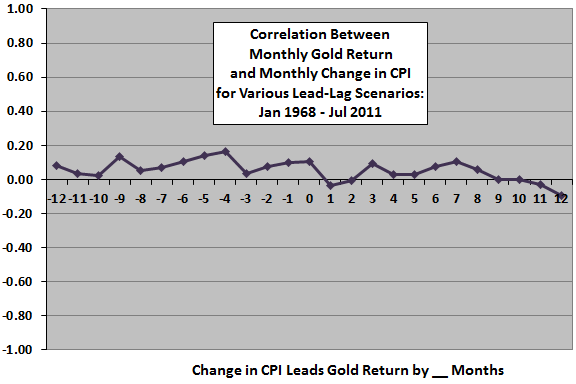
The final chart shows correlations for various lead-lag relationships between annual spot gold return and annual change in CPI over the selected sample period, ranging from spot gold return leads change in CPI by four years (-4) to change in CPI leads spot gold return by four years (4). An increase (decrease) in spot gold prices indicates an increase (decrease) in the consumer inflation rate one or two years hence. However, changes in the inflation rate do not significantly predict future gold price behavior.
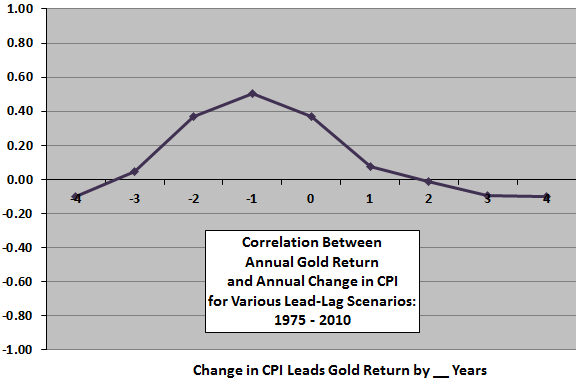
In summary, evidence from simple tests find that CPI, stock market behavior and consumer sentiment have little or no power to predict spot gold returns at a monthly horizon. The strongest finding is that spot gold prices anticipate the inflation rate by one or two years.
In other words, it appears that gold investors bid the price up or down based on somewhat accurate expectations of inflation the next one or two years.
Cautions regarding findings include:
- The above analyses are in-sample. An investor operating in real time with strictly historical data may obtain different results at different times.
- Sample periods are not long in terms of number of economic cycles and inflationary/disinflationary regimes.
- Release dates for CPI and consumer sentiment are after the end of the month measured. Precise alignment of gold and stock market levels with these release dates may alter findings.

No comments:
Post a Comment